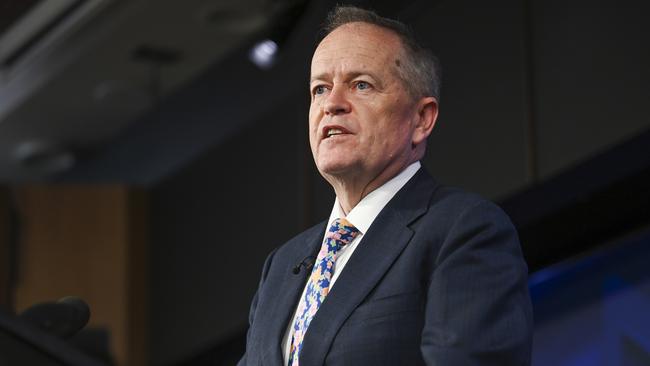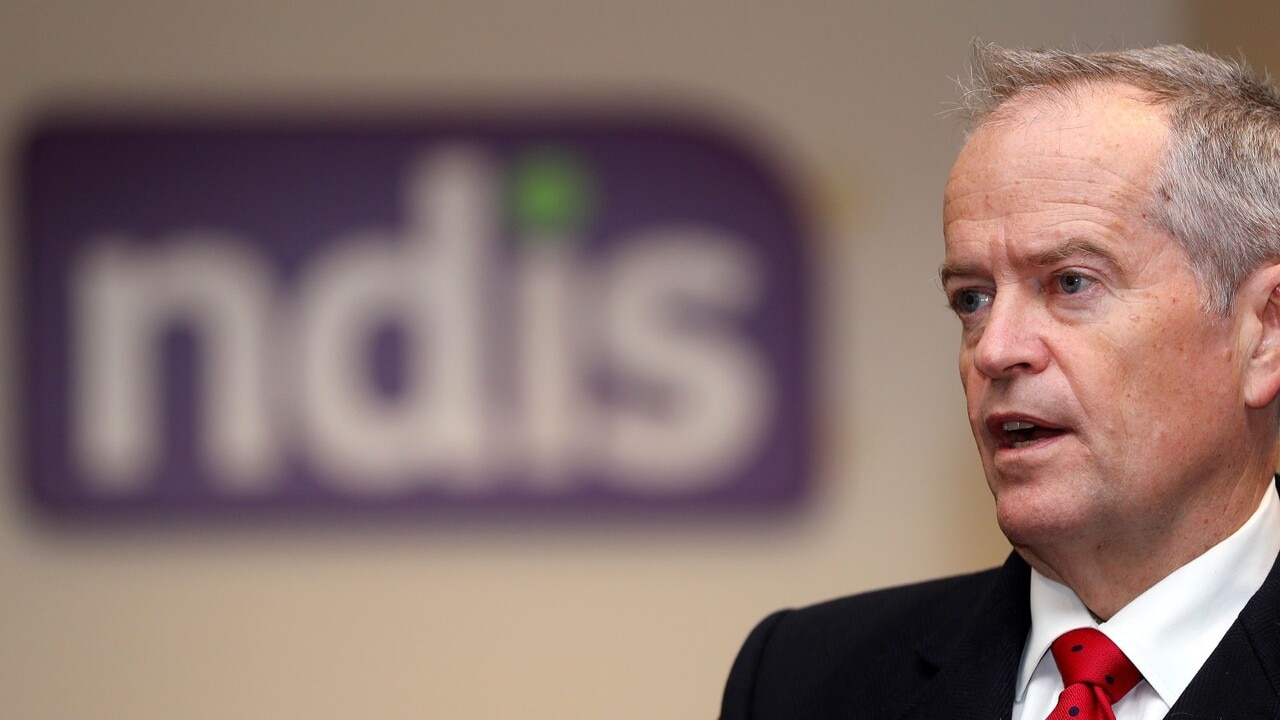NDIS expenses $150m below expectations in September quarter but costs keep rising
NDIS expenses were $150m below expectations in the September quarter, despite the number of participants with approved plans increasing to more than 680,000 and payments costing taxpayers $11.5bn.

National Disability Insurance Scheme expenses were $150m below expectations in the September quarter, despite the number of participants with approved plans increasing to more than 680,000 and payments costing taxpayers $11.5bn.
NDIS Minister Bill Shorten seized on the latest quarterly report for the $42bn-a-year scheme, saying it showed the Albanese government was not only stabilising its financial growth but, most importantly, improving people’s lives while they accessed the program.
The number of participant complaints dropped for the first time since the 2022 December quarter, with 17,751 complaints received in the September quarter compared to 20,215 in June.
While Mr Shorten acknowledged not everything in the scheme was fixed and some people were doing it tough, he told The Australian: “This is more than green shoots, this life-changing scheme is beginning to show signs it is blooming with a safe and sustainable future.
“The Albanese government promised to get the NDIS back on track for people with disability and this new report is more evidence we are succeeding. People with disability are being put back at the heart of the NDIS and the scheme is returning to its original intent to support them.”
Labor hopes to reduce the annual growth of the NDIS to 8 per cent by mid-2026 as part of its aim to make the scheme sustainable in the long term.
The $150m improvement to the September quarter results came as Labor’s first round of structural reforms to the NDIS passed parliament, with a crackdown on services that can be claimed by participants forecast to save the budget $19bn across the next four years.
State and territory leaders need to agree on tightening eligibility for the scheme by July next year.
The number of children entering the NDIS continues to grow at a faster rate than older participants, with 70 per cent of the 23,667 Australians who started on the scheme and received a plan in the 2024-25 financial year to date being younger than 15.

“Overall, the rate of participation in the NDIS rises steeply from birth, peaking at roughly 10 per cent at age six (as a proportion of the Australian population). The rate then declines steadily to around 1 per cent by age 35, before rising gradually to 2 per cent by age 56,” the September quarterly report states.
“Participation rates for males and females differ considerably at younger ages. At the peak, at age six, the participation rate for males (13.8 per cent) is more than double that of females (6.2 per cent).
“Much of the difference in participation rates by gender can be explained by differences in diagnosis by disability type. For NDIS participants younger than 18, the most prevalent disability types are autism and developmental delay. Both disability types have higher diagnosis rates in males than females.”
At the end of September, there were 35,371 participants receiving supported independent living help costing $3.8bn in the last quarter.
Total payments to participants on supported independent living have increased 25 per cent annually over the past two years, from $9.2bn to $14.5bn.
There were also 10,120 specialist disability accommodation dwellings at the end of September, up 17 per cent annually over the past two years and marking an increase of 1821 dwellings compared to September 30, 2023.
While total NDIS payments continue to grow due to both an increase in participants and higher average costs per person, the National Disability Insurance Agency said there had been “continued stabilisation of plan inflation” and improvements to the planning process that had led to more consistent decision-making.
The number of people leaving the NDIS as their support needs stabilised was also rising, including children who left the scheme whose needs were best met outside the government program.
The NDIA said highlights of the latest quarterly report included 42 per cent of participants aged 15 and older who have been on the scheme for more than two years increasing their involvement in community and social activities.
That group of participants has also more than doubled participation in work, from 10 per cent to 22 per cent. They say the NDIS helped them have greater choice and control in their lives.




To join the conversation, please log in. Don't have an account? Register
Join the conversation, you are commenting as Logout